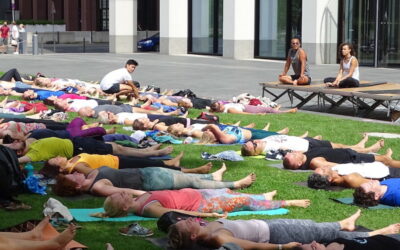Have you ever come across the topic of trauma? It is still one of the less discussed topics in our society. Even though more and more relevant research about trauma and how to heal it is being done.
Similarly, integrating trauma informed approaches in the yoga world remains a niche topic. The reason behind this article is to illuminate the effective role of yoga when working with trauma.
This article is part of a two part series on trauma and yoga. There will be a follow up article on tips on how to teach yoga in a trauma sensitive way.
In this article you will learn about
- 1. The Importance of Knowing About Trauma
- 1.1 What Is Trauma?
- 1.2 Trauma and the Mind-Body Connection
- 1.3 The Importance of Working With Trauma in the Body
- 2. Why Yoga Is So Effective for Healing Trauma
- 2.1 Possible Challenges for a Traumatised Person During a Yoga Practice
- 2.2 Positive Effects of Yoga for Healing Trauma
- 2.3 Best Yoga Styles for Trauma Release
1. The Importance of Knowing About Trauma
Why is it important for yoga teachers (and practitioners) to know about trauma?
Trauma specialists recommend educating about trauma in all kinds of areas. From school teachers to jail workers to everyone working in health and wellness professions, which naturally also includes yoga teachers. This could help to relieve trauma symptoms and even help to prevent trauma from manifesting in the first place.
So let’s take a closer look.
1.1 What Is Trauma?
The term trauma can be quite confusing. Most people think of heavy events such as war, natural disasters, displacement, accidents or (sexual) violence when hearing the term trauma. Or they think of the more frequently used reference to trauma relating to the medical trauma. This refers to trauma resulting from blunt or penetrating forces outside of the body like falls, cuts or other impacts. All these events happen to contain elements of shock and terror and can certainly hold the potential for trauma. As there are different types of trauma, let’s take a more detailed look.
Shock Trauma
Trauma research expands the term to literally any event that evokes shock, terror or other sensations and feelings which result in a feeling of overwhelm and helplessness. This could be something as “normal” as a break up, a divorce, the sudden death of a loved one or a surgery.
So we can see that trauma does not necessarily have to result from a life-threatening event. These traumas are called shock traumas. They are single events exceeding the capacity of our inner resources. Common symptoms can be flashbacks, dissociation and a whole range of symptoms known as PTSD (Post Traumatic Stress Disorder).
Developmental Trauma
Another form of trauma is the so-called developmental trauma. Here the feeling of overwhelm and helplessness happens not only once, but repeatedly over a longer period of time. This form of trauma mainly results from a child lacking the care of or trust in its primary caregiver from a very young age.
The outdated belief to let a baby cry itself to sleep is today known to be one critical factor for developmental trauma. Why? Because infants are neither able to self-regulate their nervous system, nor can they learn from such an experience. The situation in the eyes of a child is simply terrifying. It also adds a sense of overwhelming helplessness, since they have less inner resources to help themselves compared to an adult.
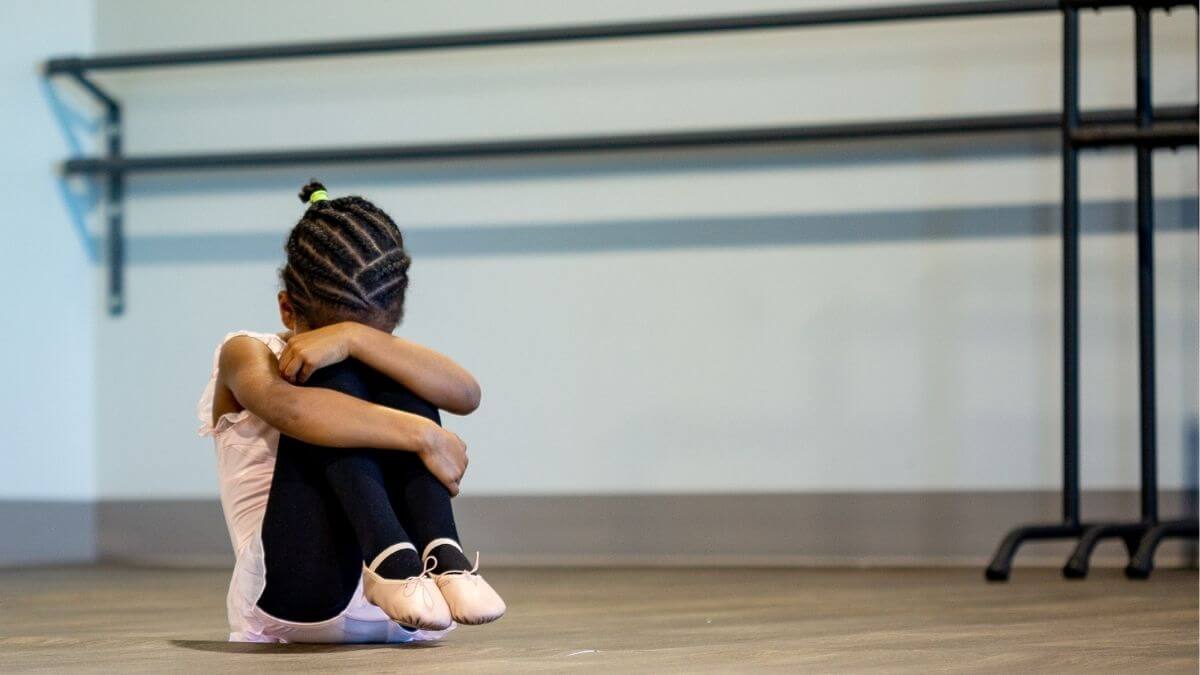
Small children are especially vulnerable to experience trauma. Photograph by Unsplash.
Developmental trauma is more common than shock trauma. Symptoms of developmental trauma often don’t seem obvious at first. They can but don’t necessarily include sleep disorders, restlessness, nervousness, anxiety, panic, volatility, self-mutilation, general exhaustion, lack of self-worth, fits of rage, panic, smoking, addiction and depression. But also a general inability to connect to the self and/or others in a healthy and sustainable way.
Understanding Trauma
The emphasis for the resulting symptoms lies on “can”. Even though these situations (both from shock and developmental trauma) hold the potential for trauma, some individuals seem to have developed more inner resources. These resources help them to work through overwhelming events and thus prevent trauma from manifesting in the first place.
“Trauma is not what happens to you,
it’s what happens inside you as a result of what happened to you.”
An important part of comprehending trauma is to understand that “trauma is not in the event itself; rather, trauma resides in the nervous system” (Peter A. Levine) and thus is stuck in the body.
To say it in the words of trauma researcher Gabor Maté: “Trauma is not what happens to you, it’s what happens inside you as a result of what happened to you.”
1.2 Trauma and the Mind-Body Connection
The origin of the word ‘trauma’ is Greek for ‘wound’. Trauma is a wound. A wound that, if not healed well, can create dysfunction and fear. As the body and the mind are inextricably connected, every emotional wound is represented in the physical body. Every physical wound will also affect our emotional and psychological state of being.
A simple example is our bodily response to a feeling of being rushed or hurried. The body increases the heart rate, blood pressure and breathing rate to be able to release more energy. Vice versa we can often observe that physically injured people behave more sensitive and might feel sad or more vulnerable.
More visible to the eye, physical trauma from cuts or fractures is stored in the body. This can be in the form of scar tissue or shortened ligaments. These types of wounds are commonly treated with physical therapy like physiotherapy.
The often overlooked consequences of unresolved emotional trauma can also be found in the body. They are mostly identifiable through bodily sensations.
It is safe to say that almost everyone has already experienced sensations such as heartache, a wrenched gut, feeling constricted, tension or numbness at least once in their life. For traumatised individuals this feeling is not temporary but a constant companion which remains mainly untreated and undetected.
In conclusion, it is essential to know that all trauma is stored in the body and not only in the mind. Understanding this is key to understand and heal trauma.
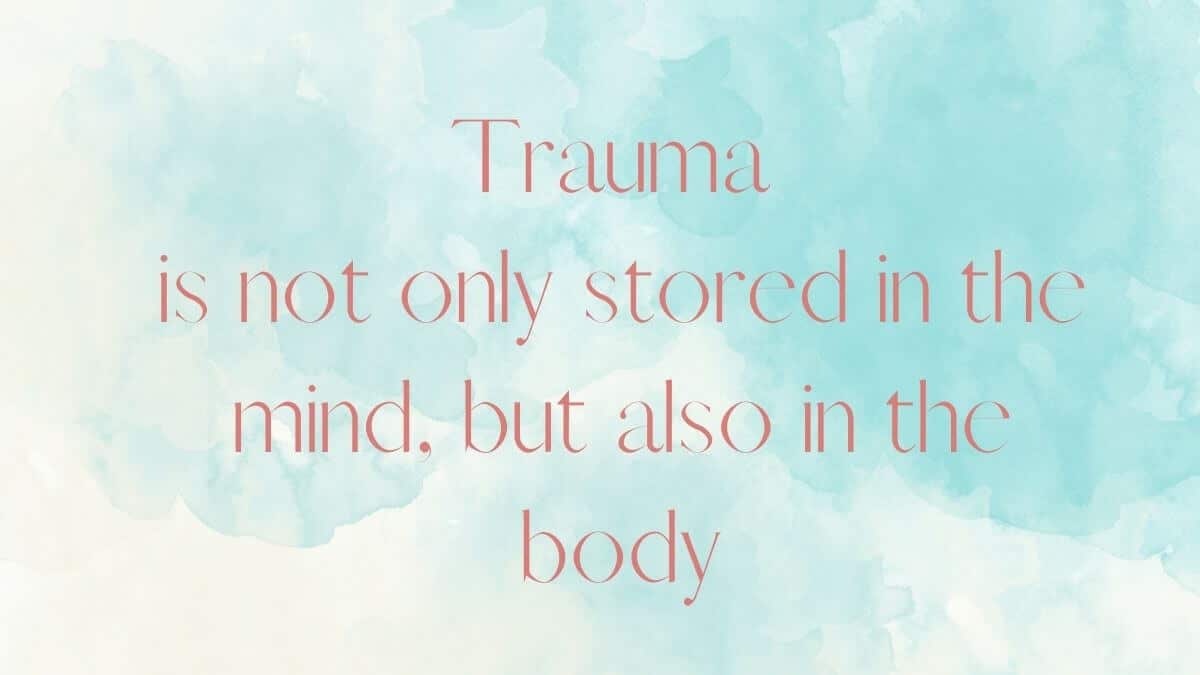
Knowing about trauma (also in the body) is the first step towards healing. Artwork by TINT.
Our body is like a map full of landmarks telling the story of our life. And the story of what has happened to us. The chapters of this story can be read in all the body’s tissues. This can be fascia, organs, muscle and ligaments. But also in form of the wiring of the nervous system and neural pathways which explains our behavioural patterns.
Taking this conclusion a step further, means that through changing the body, it is possible to ultimately change the mind. And thus being able to make decisions towards changing your life. Achieving this is not done by a flick of the finger, but rather by preparing yourself to take part in a (life)long journey. Yoga can be a great tool and act as a companion on this journey.
1.3 The Importance of Working With Trauma in the Body
Today, and especially in the West, it is common practice to treat trauma showing up in the mind or emotions at a psychologist or psychiatrist. Conversational and behavioural therapies and/or medication represent the majority of used therapies. Yet, the correspondent part of trauma residing in the body is often neglected. This is not to say that one should not be taking medication or go to talk therapy.
However as all trauma resides in the nervous system, it is key to soothe the nervous system´s arousal and alter its perception of danger to overcome trauma. The nervous system, consisting of the brain, the spinal cord and a myriad of nerves, is part of the body. So it is not only essential but also fairly accessible and easy to start releasing trauma by moving and changing the state of the body.
The central idea behind this approach is to aid the body release the energy which got stuck in the body during the overwhelming event.
Our body has four main stress responses – fight, flight, freeze and shut down. A healthy response enables us to act out and fully release energy afterwards. If this is not possible or suppressed, then this energy of shock and terror remains frozen inside of the body.
Here is one example of a failed acting out of a stress response. It could be being unable to run away because of being strapped down for a medical procedure. On the other hand, a healthy release of energy could be by (involuntary) trembling, shaking or crying. The importance lays on nobody telling you to stop this or rate it as inappropriate behaviour.

Crying is normal and healthy bodily response to cope – at all ages. Photograph by Pexels.
Survivors of traumatic events often experience a disconnection or disassociation from their bodies or specific parts of the body. This is because the sensation in the body or in a certain body area is too unbearable to feel every day. The body suppresses the painful sensation and goes into protection mode, to enable us to survive our daily life.
So in a way, it is a very helpful response, because our body is simply trying to protect us. This line of thought – that our body is actually helping us and not working against us – is a very central aspect of acknowledging trauma. And the first step towards healing it.
The good news is, that somatic (body-centered) visionaries and bodyworkers, such as Ida Rolf, Peter Levine and Moshe Feldenkrais, have developed some very effective ways of transcending trauma. This is by working with the physical body. These include Somatic ExperiencingⓇ and TREⓇ (Tension and Trauma Releasing Exercises) and others. Also, regular yoga practice in general, as well as trauma informed yoga approaches can be helpful.
2. Why Yoga Is So Effective for Healing Trauma
Bessel van der Kolk, trauma researcher and author of the book “The Body Keeps the Score”, has conducted empirical studies which show that yoga is significantly more effective than medication or psychotherapy to relieve symptoms of PTSD (Post Traumatic Stress Disorder) and many other trauma symptoms.
The main reason for this lies in the soothing effect of yoga on the nervous system and the body. Further effects can be found in the altered state of the mind and self-perception.
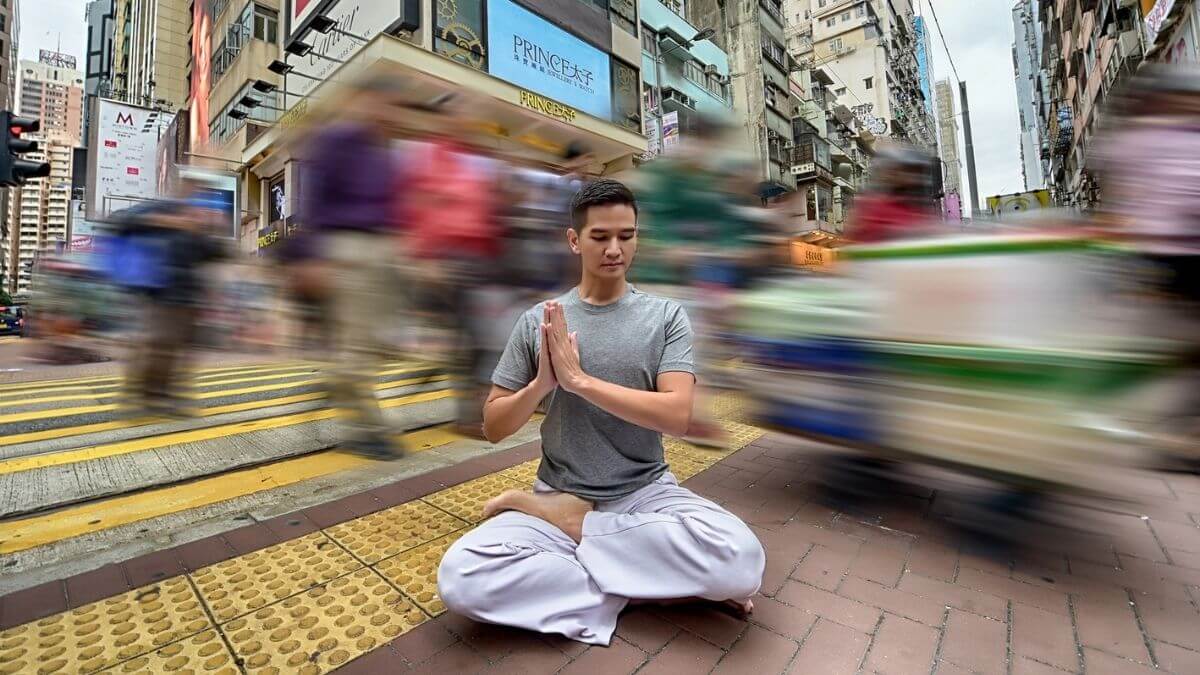
Yoga can be a great tool to re-connect to the body in a world full of external stressors. Photograph by TINT.
Next we will dive into the details of the positive effects of yoga on trauma. But before we start it is important to understand what traumatized individuals may struggle with during a yoga class. This is the basis to hold space and empathy for arising feelings. It also enables us to give options accordingly or to make more sense of your own reaction in certain situations.
We will cover more tips on teaching trauma sensitive yoga. So keep your eyes open for our upcoming article on yoga and trauma.
2.1 Possible Challenges for a Traumatised Person During a Yoga Practice
As each human being is highly individual, so are trauma responses. The following list is by no means exhaustive, but intends to give you a first idea about what to expect.
In a yoga class individuals with a history of trauma may feel:
- That they have difficulty with closing their eyes, as they don’t feel safe enough.
- They cannot hold certain poses for too long because of unwelcome pain, thoughts, feelings or other body sensations rising up.
- Being unable to access a certain body part because they don’t know “where it is” on a sensory level. This could be resulting from numbness in the body.
- They have difficulty breathing calmly and deeply. This can be due to the breath is shallow and restless and focusing on the breath might create anxiety.
- Sitting or laying still in quietness with their own thoughts is not easy or can be frightening.
- They cannot feel “common/normal” sensations. For example the sensation of opening up in backbends, because of feeling constricted and tense in their body.
As said before, these are only a snapshot of challenges that may arise during a yoga class. The reason for these challenges lies mainly in the constant firing of the nervous system in survival mode. Thus leading to a subconscious but highly alert feeling of perceived danger.

Closing the eyes in Savasana can be difficult for some. Photograph by Unsplash.
Understanding the nervous system and how to reprogram the conditions above is explained in the concept of the Polyvagal Theory. It will be the topic of the third article in this series on trauma and yoga.
2.2 Positive Effects of Yoga for Healing Trauma
A short word on yoga. When most people think about yoga, they think about asana and yoga sequences. And most commonly even about pretzeling their bodies into strange shapes. But this only relates to the physical aspect of the practice.
But yoga is so much more than just asana, as it includes breath practice (pranayama), meditation (dhyana) and mindfulness techniques, self-study, ethical principles and even specific cleansing protocols.
The earlier mentioned study from Dr. van der Kolk describes the healing effects of yoga for trauma as follows: “Yoga may improve the functioning of traumatized individuals by helping them to tolerate physical and sensory experiences associated with fear and helplessness and to increase emotional awareness and affect tolerance.”
But what does that exactly mean?
Simply put, yoga helps to:
- Sit and stay in a body position with feelings coming up, but also finding a specific end to it. This reestablishes a sense of time and a feeling of “this too shall pass”. It will make the experience predictable and thus add safety.
- Move the body according to a specific structure of asanas. This can help to find guidance but also set boundaries and a frame for experiencing the body. The body can be experienced as a container with a capacity for holding all kinds of feelings.
- Learn how to use the breath as an agent of calmness and equanimity. This adds a different quality to the nervous system.
- Reflect upon and reframe one’s personal story by using mindfulness techniques.
- Change the structure of the connective tissue through sustained stretches. In contrast to general exercise regimens, yoga can change the pattern of the fascia and, related to this, the patterns of emotions.
- Develop a deep relationship to the inner sensory system and thus reconnect to the body.
- Add new layers of growth, confidence and triumph through mastering new skills. This is immensely effective to change the perspective of being in the role of the victim.
- Safely experience deep states of relaxation, like Savasana or Yoga Nidra, helping to soothe the nervous system.
You can watch Dr. van der Kolk beautifully explaining the effects of yoga in this short video. Yet another positive effect of yoga is the general organic and fluid movement which releases stuck energy in the tissue. It helps to increase circulation to open the tissue up for new experiences.
Playing music during a yoga class can also help to fully immerse in the movement and experience a sense of feeling alive.
2.3 Best Yoga Styles for Trauma Release
When it comes to yoga styles, there is really not one preferred over another. Rather there are different aspects of each practice to be considered depending on what you wish the outcome to be.
More static and therapeutic yoga styles, like Iyengar yoga, can greatly help to support the body. Mostly the positions are held for around ninety seconds. As the muscles have a chance to calm down, the much slower moving fascia can also begin to relax and lengthen.
However, more dynamic styles like Vinyasa or Ashtanga Yoga can help to increase the body temperature and internal heat. You can imagine stuckness in the body like a kind of mucus or glue. Heating it up will make it easier to move it through the body. This can also have a positive effect on the overall quality of the fascia.
Often specific forms of yoga like Kundalini Yoga or Osho meditation can be helpful for releasing trauma. They involve a lot of shaking and repetitive, meditative movements. The shaking helps to free up the frozen trauma energy.
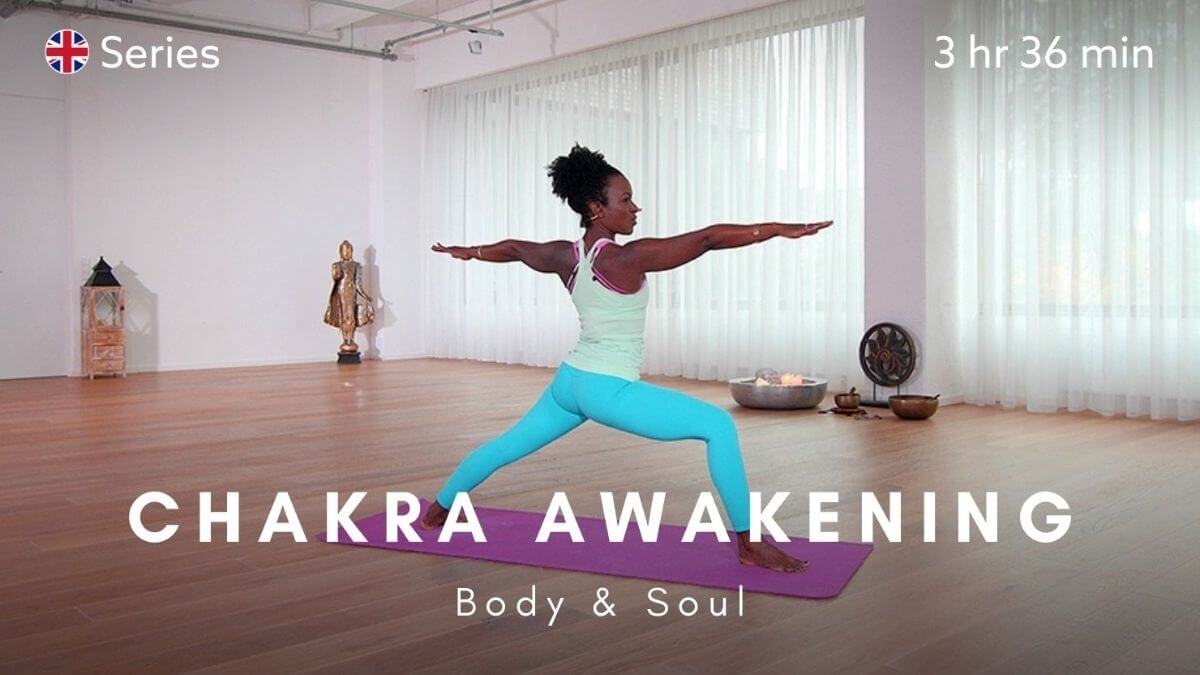
TINT teacher Faith Hunter is influenced by her studies of Kundalini Yoga. You can join her program here. Photograph by TINT.
Gentle practices like calm sequences of Yin Yoga can be used to encounter the issues of trauma in the deeper tissue layers. By encouraging longer holds, experiences of upcoming emotions can be supported. Simultaneously Yin Yoga is very calming for the nervous system in general.
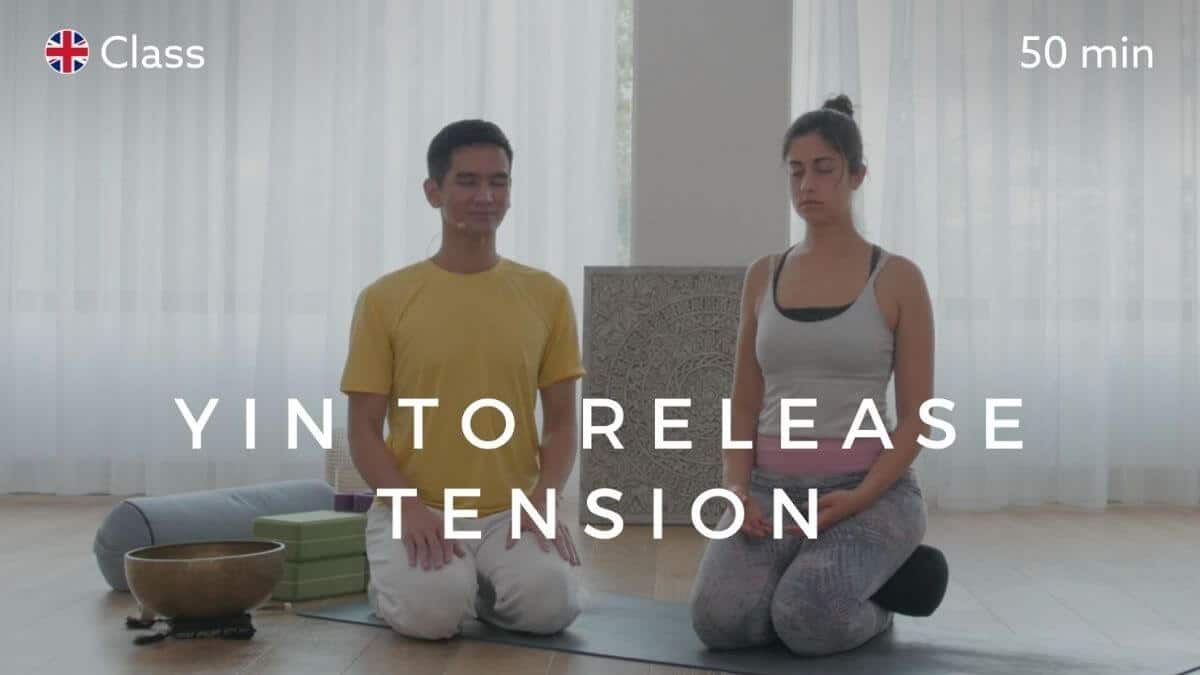
Join Chris Su in a gentle Yin Yoga practice to release excess tension. Photograph by TINT.
Whichever style you pick for yourself, be aware of very enduring practices which demand you to push past your boundaries. Exceeding your tolerable capacity can become counterproductive, as sudden and big releases can hold the potential to re-traumatise.
It is always important to let the traumatic energy surface slowly and in small quantities. This is even more true for more overwhelm that has been experienced. So always be gentle to yourself.
Further ways for creative energy output can be found in activities such as theater roleplaying, dancing or play in general. The idea behind this is to change the story and experience yourself in new ways.
“If the body feels safe, the mind feels safe.”
However, this change will not happen in a day or in a month. It will require a long term commitment – to yourself and to your healing journey.
Different people need different things, there is no “one size fits all” and life is an experiment. So is healing trauma: It is an experiment.
In the end, it is all about finding a way to acknowledge that what has happened to you is over. And to find a feeling of safety in your body, because if the body feels safe, the mind feels safe.
You want to read more about tips on teaching yoga in a trauma sensitive way? Great – keep your eyes open for our follow up article. You can also sign up for our newsletter to stay up to date with our latest articles.




